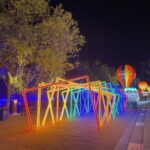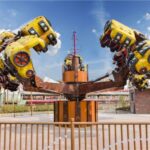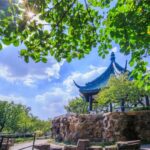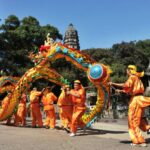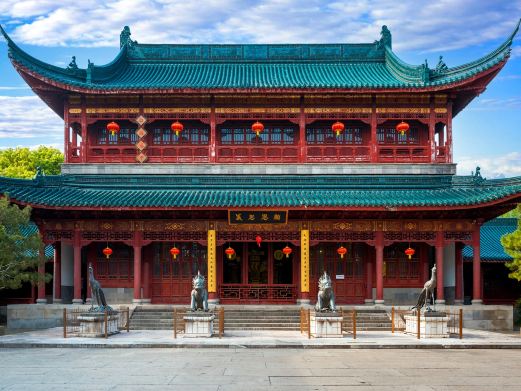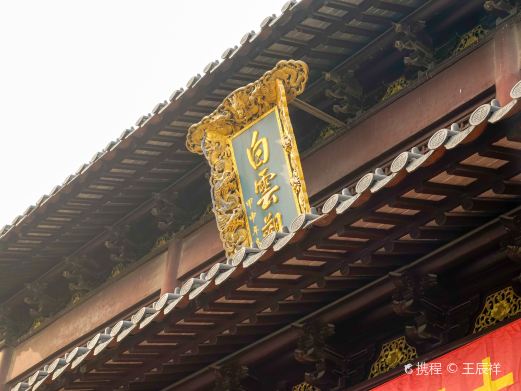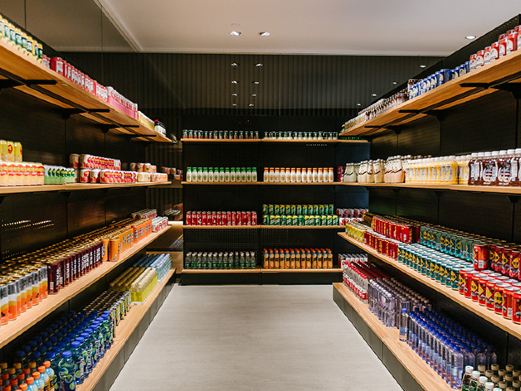When it comes to Nanxiang, the first thing that comes to mind is the ‘Nanxiang Xiaolongbao’, a special delicacy in Shanghai. It seems to be a local symbol. In fact, Nanxiang Ancient Town not only has Xiaolongbao, but also many cultural relics worth exploring. Nanxiang Ancient Town has a history of 1500 years. Inside the ancient town, there are Guyi Garden, the largest Jiangnan garden in Shanghai, Nanxiang Old Street, Liuyun Temple, Nanxiang Twin Towers, etc.
, reflecting the profound ancient charm culture. Nanxiang Ancient Town has convenient transportation. Getting out at ‘Nanxiang’ station on Metro Line 11, the scenic spot closer to the subway station is Guyi Garden built during the Jiajing period of the Ming Dynasty (1522 – 1566 AD). Generally, people visit Guyi Garden first. In different seasons, Guyi Garden has different flower shows according to the flowers in bloom. There are begonias in spring, lotus in summer, wintersweet and narcissus in winter. The famous one is the lotus in summer. The成片 lotus embellish the pavilions and towers of Guyi Garden, making the garden look more unique. During the Lantern Festival, Guyi Garden will also hold a lantern show. If you arrive at Nanxiang in the morning, after visiting Guyi Garden, it is almost noon. The Shanghai Guyi Garden Restaurant in the park is probably the originator of all Nanxiang Xiaolongbao in Shanghai. The Xiaolongbao in Nanxiang Ancient Town also takes this store as the leader. If you want to enjoy a big meal, you have to face a long queue of many customers first. If you are not persistent in tasting Xiaolongbao at the ‘number one’ Nanxiang Xiaolongbao store, in fact, there are Xiaolongbao stores everywhere in Nanxiang Ancient Town. You can walk to Nanxiang Old Street and find a place to sit down at random. The taste is equally good. Walking 500 meters west from Guyi Garden and then walking 200 meters north to the river, you can reach Nanxiang Old Street. If you want to see the original scenery of Jiangnan water towns, it is all on the cold and quiet side roads. If you inadvertently turn a corner, you can see the old houses with white walls and black tiles by the river. There are green plants growing in the wall gaps. There are unadorned small bridges over the river. The roads are paved with pebbles. There are mops hanging on the steps extending into the river under the old houses. Time seems to stay in the 1970s and 1980s in Shanghai. In Nanxiang Old Street, there are many shops standing in great numbers. Instead, the commercial atmosphere is heavy. However, there are many delicious foods on both sides of the old street. In addition to Xiaolongbao, the special delicacies also include grass head cakes, stinky tofu, etc. Walking along Nanxiang Old Street to Liuyun Temple. This ancient temple, originally named ‘White Crane Nanxiang Temple’, was built in the fourth year of Tianjian in the Liang Dynasty (505 AD). In the Shaoding period of the Song Dynasty, it was renamed ‘Nanxiang Temple’. The name of Nanxiang Ancient Town comes from this temple. In the Kangxi period (1700 AD), it was renamed ‘Yunxiang Temple’. Unfortunately, it was later destroyed. The current Liuyun Temple is a reconstruction. Only a pair of brick towers of the ancient temple survived the disaster. Now the Nanxiang Twin Towers built from the Five Dynasties to the early Northern Song Dynasty beside Liuyun Temple are the symbols of Nanxiang Old Street. There is glass ground laid under the towers. Through the glass, you can see the ruins of the old street in the Song Dynasty underground.In the old street, you can also visit the Nanxiang History and Culture Exhibition Hall, the private garden Tan Garden of Li Liufang, a literati in the Ming Dynasty, and you can also take a cruise. Or spend a few yuan to sit in the Chaxi Storytelling House. Listen to the storyteller tell stories in Wu dialect. Buy a bag of peanuts and order a pot of tea. The afternoon passes by in this way.

Open all day all year round.

